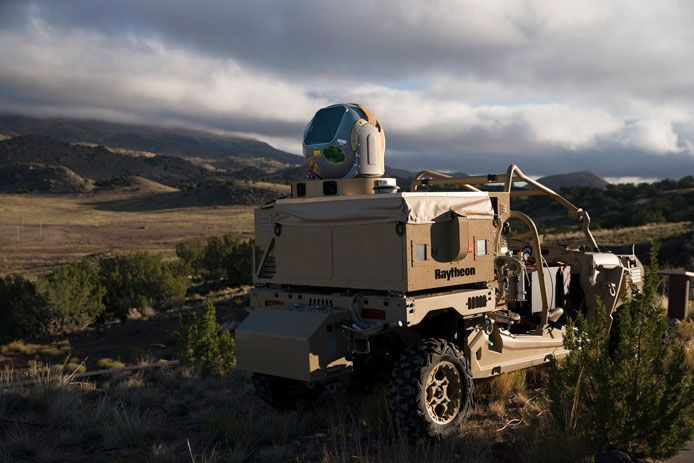US Army To Field Stryker-Mounted Lasers: Here's What You Need To Know

An upcoming demonstration of the Stryker system will showcase the Army's ability to use laser weapons in actual battle. The Stryker vehicles have been in design for several years under the Other Transaction Agreement (OTA) between the Army, Northrop Grumman, Raytheon and Kord Technologies. We will have to wait for the results of the demonstration because the details of this deal have not been made public.
While specific details are sparse, here are what we know. The Army is working on developing a platoon of four Stryker laser-equipped vehicles. Each of these will contain a 50-kilowatt laser. The system is designed to engage and destroy incoming threats in battle including drones and missiles even without firing a single bullet. The Army has recently announced an impressive advanced timetable indicating that the system and its supporting vehicles will be operational by 2022, Fox News reported.
Direct energy weapons use photons in place of projectiles and do not “fire” anything in the traditional sense other than a highly focused beam of light. This ability makes it highly effective in battle because there is no sound associated with its offensive operation. This means that the enemy will not be able to locate it or its weapons by sound.
Another impressive feature of the laser system is the ability to adjust its purpose on the fly. Not only can it takes an offensive stance but its abilities can be used as sensors to locate targets and transmit information to troops.
Laser weapon systems do have their downfalls as they are limited to line of sight meaning they have to have a clear path to the target to engage it. This means that inclement weather including rain frog and sleet can throw the laser off and render the weapon useless. Powering the laser system is also a huge obstacle to overcome as the laser and its support components require massive amounts of power to operate. There has been no indication from the design team or the Army as to how they plan to deal with these limitations.
The Army has made many moves recently announcing new vehicles and drones that seem to have fallen out of science fiction novels. Army Vice Chief of Staff Gen. Joseph Martin told Warrior, “We’re modernizing the Army and changing our doctrine to multi-domain operations, and we’re taking a hard look at how we’re organized across the Army to make sure that we’re appropriately structured for, equipped with and trained to succeed and dominate in that environment"
Recent developments seem to point in the same direction
The Chinese and Russian militaries have been developing laser technology. According to recent reports, both superpowers' already have the ability to fire handheld lasers and incinerate targets.
© Copyright IBTimes 2025. All rights reserved.






















